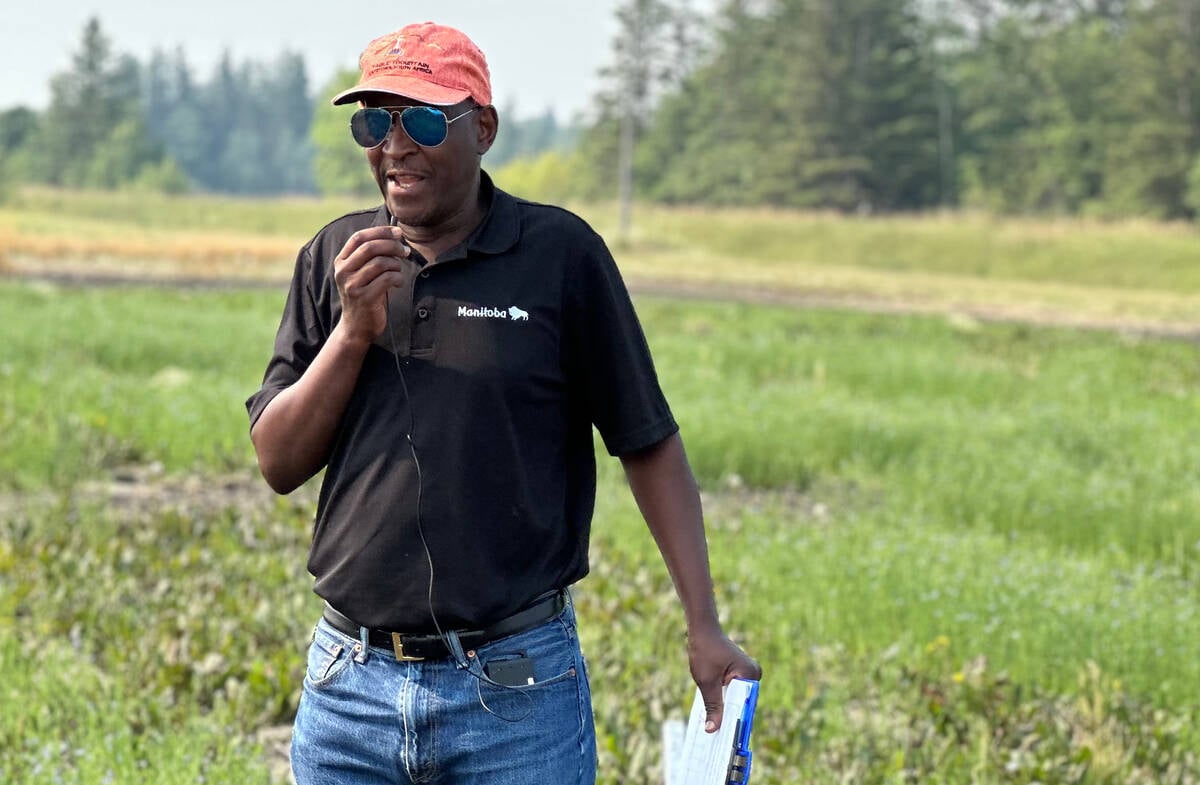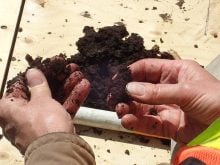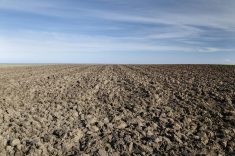For farmers battling erosion on hilltops, restoring productivity can be a difficult challenge.
However, according to Curtis Cavers, an agronomist with Agriculture and Agri-Food Canada, there are practical strategies to mitigate the problem and improve crop yields.
Cavers presented his erosion research at Manitoba Potato Production Days in late January at Brandon’s Keystone Centre.
Read Also

How much nitrogen can farmers really cut?
Manitoba fertilizer trials look for nitrification inhibitor sweet spot, to lower greenhouse gas emissions and cost without hurting yield.
Why it matters: Eroded hilltops become less productive patches of the field, hitting at a farmer’s overall production.
Knolls and uplands are often some of the first places a farmer will develop an erosion problem.
It’s an issue that’s been tackled repeatedly by experts like David Lobb out of the University of Manitoba. In one 2019 Manitoba Ag Days presentation, Lobb argued that erosion-driven yield loss was costing Canadian farmers about $3.1 billion a year. Of those eroded areas, he noted, hilltops or knolls were some of the greatest culprits.
Tillage erosion has been a repeated topic in many of those erosion presentations, although wind erosion has also made its mark in the headlines thanks to visually striking instances of blowing soil.

Cavers also noted soil movement in those patches due to the tendancy for water to run off rather than soak in. Years of wind, water, and tillage erosion have stripped many of these patches of their topsoil, leaving behind poor seedbed conditions and low soil organic matter and soil carbon, he noted.
Those eroded hilltops often also have uneven fertility, Cavers said. Unless the farm is using certain types of precision technology, the eroded, marginal patches often get the same fertilizer as the rest of the field. Soil tests will often show excess, unused nutrient since those patches lack the plant growth to use them up.
“If you see that over time, there’s that possibility that that there could be a buildup of nutrients at these locations. So, the only way to know is to test,” Cavers said.
Farmers can confirm the impact of erosion by looking at yield maps or relying on their own experience, he added.
“You travel over a piece of ground hundreds of times in your career. You start to know what parts of the field are the productive parts and which ones are not so much.”
Recovery
Cavers pointed to several possible strategies for farmers to try and restore productivity to their eroded hilltops.
One option is to increase fertilizer and seeding rates in those patches. That more intensive management might improve yields, but it also hits on the other end of the profit margin, with increased nutrient and seed costs.
“Fertilizer is not cheap. It could be a quick fix in some cases. In other cases, you’re going to spend a pile of money and still have nothing to show for it,” Cavers cautioned.
Water is a major driver of yield potential. Therefore, the steady, measured water volumes from irrigation can help bolster crops, especially in dry years. It’s also already a strategy prevelant on Manitoba’s sandy, light potato ground.
“It’s really hard to grow a decent crop with no water, or very little water, or water that comes at the wrong time,” Cavers said.

Applying manure or compost can increase organic matter and improve soil structure, but availability and cost may be limiting factors. Planting cover crops helps protect soil from erosion and adds organic matter, but the benefits of that are gradual rather than immediate, occuring over the space of years.
Tillage is another often-pointed to villain when it comes to erosion. But while switching to conservation tillage or no-till might prevent more damage, it won’t necessarily restore soil health was lost due to erosion and, in a crop like potatoes, doing away with soil disturbance entirely is not a viable strategy anyway.
“No-till will stop the bleeding, but we have to then look at [options] for healing and recovery and all that in the long term,” Cavers said.
Topsoil redistribution is the method Cavers suggest in most cases. This strategy involves moving the previously washed down soil from lower areas back to the eroded hilltops.
He referenced one study where topsoil addition nearly doubled yield on eroded land when combined with increased seeding rates.
A mix of approaches often works best, depending on individual field conditions, Cavers said.
“Maybe you mix and match and try more than one of these things to see if you [get] a positive outcome.”
Temper expectations
While mitigating strategies can address some production loss, Cavers warned producers against getting their hopes too high.
Eroded hilltops may never match the productivity of lower areas. Setting realistic expectations is key.
“You probably will never get [these] areas yielding the same as everything else,” he said. “If we could get 80 per cent, that’d be fantastic; 70 per cent would be great, especially if you could get it more consistently, maybe not year after year, but say, even three years out of five.”
Farmers should also take a cautious approach, testing strategies on small areas before applying them across an entire field.
“You don’t want to invest in a solution only to find out it doesn’t work for your conditions. Managing risks and having realistic expectations is key,” Cavers said.
He also said that, when attempting these strategies, it’s important for farmers to think like scientists — testing solutions and analyzing results.
“You don’t want to reject something out of hand after trying it once but, at the same time, you don’t want to say, ‘Oh, it worked good the first year, now I’m going to convert the whole farm.’”
















